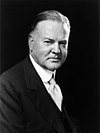Consolidated Zinc was an Australian mining company from 1905 to 1962.
History
The company's initial operations focused on extracting zinc from mine tailings of the Broken Hill Ore Deposit at Broken Hill, New South Wales, Australia. [1] The company was founded in Melbourne on 9 September 1905 as the Zinc Corporation Limited, to exploit residual zinc concentrations with an estimated value of $12 million in the 6 million tons of mine tailings deposited from mining activities over the previous 20 years. Key figures involved in the effort included William Baillieu and William Sydney Robinson. [2] Also involved was future U.S. president, but then a mining engineer working for Bewick, Moreing and Company, [3] Herbert Hoover, who inspected the tailing dumps in the group's investigations prior to formation of the company. [4] [5] [6] Other investors in the new company were Clark & Robinson (William Clark, Lionel Robinson and Company), and Arthur Terrell. [3]
They established concentrating mills at Broken Hill in 1905 and 1910, and in 1906 an associated sulphuric acid manufacturing plant whose first manager was (later Sir) H. W. Gepp. [7]
In 1911 they expanded into primary mining activities with the purchase of Broken Hill South Blocks Ltd (colloquially "South Blocks"), constructing underground mines [4] and mining for zinc, lead, silver [8] and gold [9] in the Broken Hill area.
In 1949, Zinc Corporation merged with the Imperial Smelting Corporation to become Consolidated Zinc. [9] In 1953, Haddon King became chief geologist. [10]
Over time, the company built up substantial financial resources but failed to develop suitable new mining projects. This led to a merger in 1962 with the Rio Tinto Company, a company who found itself in a complementary position of having substantial development opportunities but not enough financial resources with which to pursue them. The resulting company, known as The Rio Tinto – Zinc Corporation (RTZ), and its main subsidiary, Conzinc Riotinto of Australia (CRA), would eventually become today's Rio Tinto Group. [8]
See also
References
- ^ "Timeline". Rio Tinto website. Rio Tinto Group. Archived from the original on 19 December 2010. Retrieved 13 April 2009.
- ^ Richardson, Peter. "Robinson, William Sydney (1876–1963)". Australian Dictionary of Biography. National Centre of Biography, Australian National University. ISSN 1833-7538. Retrieved 13 May 2012.
- ^ a b "Broken Hill Zinc Tailings". The Age. No. 15, 788. Victoria, Australia. 16 October 1905. p. 7. Retrieved 10 February 2019 – via National Library of Australia.
- ^ a b "Zinc Corporation & New Broken Hill Consolidated Ltd". The Silver City: Mining History. Line of Load Association. 2002. Archived from the original on 23 July 2009. Retrieved 15 April 2009.
- ^ Hoover, Herbert (1951). The Memoirs of Herbert Hoover, Years of Adventure 1874-1920. New York: The Macmillan Company. pp. 89, 102.
- ^ Blainey, Geoffrey (1963). The Rush That Never Ended. Melbourne: Melbourne University Press. pp. 265–268.
- ^ "Barrier Bits". The Critic. Vol. IX, no. 45. South Australia. 29 November 1905. p. 26. Retrieved 10 February 2019 – via National Library of Australia.
- ^ a b "RTC-CRA: United for Growth" (PDF). Rio Tinto Review. Rio Tinto Group. September 2006. Archived from the original (PDF) on 27 March 2009. Retrieved 13 April 2009.
- ^ a b "Cobar's Mining History" (PDF). Primefacts. New South Wales Department of Primary Industries. February 2007. Retrieved 15 April 2009.
- ^ D. F. Branagan. "King, Haddon Rymer Forrester (1905–1990)". Australian Dictionary of Biography. National Centre of Biography, Australian National University. ISSN 1833-7538. Retrieved 9 May 2012.

